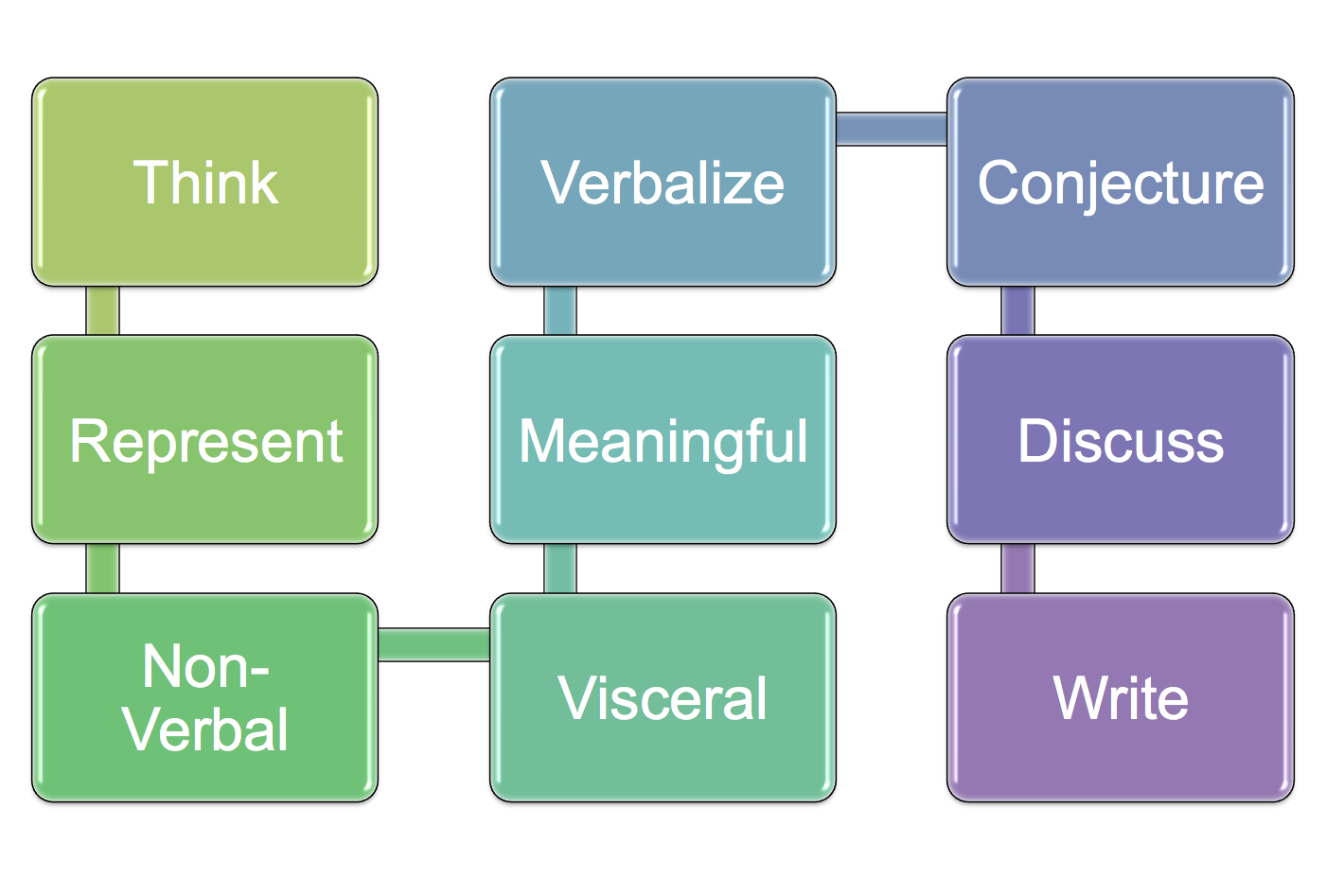Our Blogs
Logic of Listen, Move, Think!

Research tells us that children are born knowing more than we think they do and are wired to experiment with their environment (Gopnik, et. al., 2000). The notion that children think, even though they cannot speak a language, is the cornerstone of Listen, Move, Think!
As you study the graphic below, notice the path of logic and compare it to
· Child’s voice
· Prosocial behavior
· Relevance
· Relationships
· Rigor
THINK
As kids move, they share a common idea, for example, “Think of something pointy and move it behind you as you listen to the music.”
REPRESENT
If we want to share an idea, we must represent it in a way that others will understand. For us, our goal is to have kids share ideas in writing. And yet, children can share ideas through other media, movement, for example.
NON-VERBAL
Since non-verbal communication is silent, movement allows children to share their ideas simultaneously, and to voice them unfettered. For kids who have limited practice in the give and take of conversations, creative movement provides time to share without interrupting others.
VISCERAL
At any age, children learn best when their bodies are engaged in learning. Adding visceral experiences helps kids build deeper understanding and bridges the gaps between abstract concepts and concrete manipulation of their environment.
MEANINGFUL
As children use their bodies to create and represent an idea, it becomes more meaningful to them because they are in control.
VERBALIZE
Think of creative movement, non-verbal communication, as practice. The kids have ideas, and they have the time to focus on their thoughts. So, when it’s time to move from movement to speech, they have a good understanding of what they want to say and can extend their initial comments in diverse directions. For example, if a child’s response was “a pencil,” you might ask where were you holding the pencil?
CONJECTURE
A conversation has a beginning, a middle, and an end. Our job is to facilitate and guide the conversation. The beginning of the conversation is a response, “a pencil.” The next part of the conversation requires children to think about other possibilities for a pencil. For example, “If you had a pencil, what would you write?”
DISCUSS
The point of Listen, Move, Think! is to begin intelligent conversations from the context of music and gross motor movement. Conversations can go anywhere and touch on any subject, whether it’s math, language arts, writing, science, or social studies. The power of this approach lies with the adult facilitating the ongoing dialogs and to pull relevant ideas or facts into it when it is appropriate.
WRITE
Children take what was shared through movements and then through conversations, and translate it into the written word.